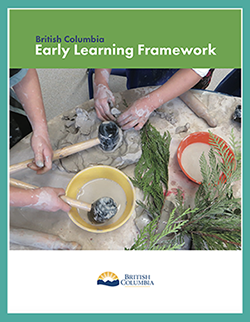Module 5: Living Inquiries – Communication and Literacies
Culture, Family, Traditions, and Knowledge
Children hear stories, poems, rhythms, chants, and songs that connect to the child’s culture.
Critically Reflective Questions
- What opportunities do I provide for children to hear stories, poems, rhythms, chants, and songs?
- How do these connect to the child’s culture?
- What opportunities are there for oral storytelling?
- For example, personal narratives, traditional stories
- How are children’s cultural backgrounds represented in the stories and symbols they use from day to day?
- How are these representations integrated into other aspects of practice?
- Do children experience the stories and symbols of their own and other cultures?
Case Study: Culture, family, traditions, and knowledge
An educator read the story “When We Were Alone” by David A. Robertson to the children in a Kindergarten classroom. This story is about a difficult time in Canadian history and, ultimately, a story of empowerment and strength. In this story, a young girl helps tend her grandmother’s garden and she notices things about her grandmother that make her curious. She wonders about her grandmother’s long braided hair and beautifully coloured clothing. She also wonders about why her grandmother speaks another language and spends so much time with her family. As the young girl asks her grandmother about these things, she learns about life in a residential school a long time ago, where everything was taken away.
Reflective Questions
How does the young girl connect to her culture? In your practice, how might you encourage the children to connect to their culture, family, traditions, and knowledge?
